
Weevils are beetles belonging to the superfamily Curculionoidea, known for their elongated snouts. They are usually small – less than 6 mm in length – and herbivorous. Approximately 97,000 species of weevils are known. They belong to several families, with most of them in the family Curculionidae. It also includes bark beetles, which while morphologically dissimilar to other weevils in lacking the distinctive snout, is a subfamily of Curculionidae. Some other beetles, although not closely related, bear the name "weevil", such as the biscuit weevil, which belongs to the family Ptinidae.
Caridae is a small Gondwanan family of weevils. They are considered part of the primitive weevil group, because they have straight rather than geniculate (elbowed) antennae. The insertion of the antennae on the rostrum cannot be seen from above. Caridae also lack spiracles on abdominal tergites 6 and 7. The prothorax lacks lateral carinae. It has been suggested that the fossil weevil Eccoptarthrus belongs in this family, which would result in a change in the family name ; this proposal has been rejected by most coleopterists (e.g.)
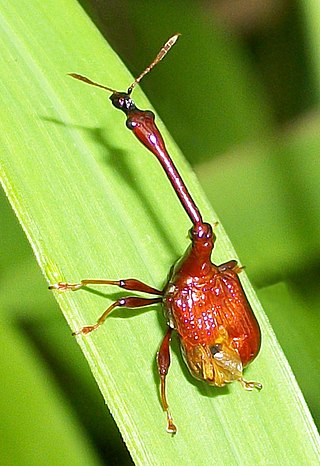
The Attelabidae is a widespread family of weevils. They are among the primitive weevils, because of their straight antennae, which are inserted near the base of the rostrum. The prothorax is much narrower than the base of the elytra on the abdomen. Attelabidae and the related family Rhynchitidae are known commonly as the leaf-rolling weevils. Rhynchitidae may be treated as subfamily Rhynchitinae of the Attelabidae.
Elwood Curtin Zimmerman was an American entomologist best known for his two multivolume series: Insects of Hawaii published by the University of Hawaiʻi Press and Australian Weevils published by Australia's CSIRO.
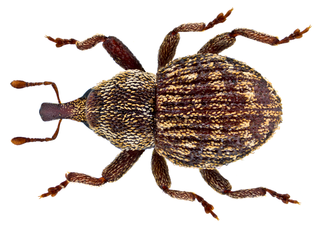
Acalles ptinoides is a species of weevil native to Europe.

Anoplus plantaris is a species of weevil native to Europe.

Archarius pyrrhoceras is a species of weevil native to Europe. The weevils are inquilines as larvae, living in galls of Cynipidae wasps formed on oak trees.

Archarius pyrrhoceras is a species of weevil native to Europe.

Calosirus terminatus is a species of weevil native to Europe.

Ceutorhynchus pallidactylus is a species of weevil native to Europe.
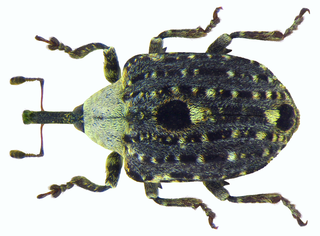
Cionus scrophulariae, commonly known as the figwort weevil is a species of weevil native to Europe.

Cleopus pulchellus is a species of weevil native to Europe.

Coeliodes ruber is a species of weevil native to Europe.
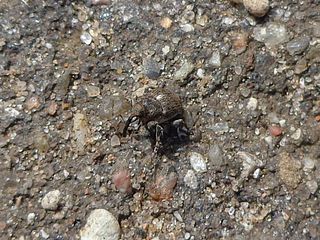
Glocianus punctiger is a species of weevil native to Europe.
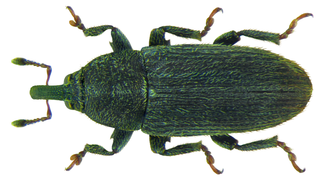
Mecinus pyraster is a species of weevil native to Europe.

Micrelus ericae is a species of weevil native to Europe.

Phytobius leucogaster is a species of weevil native to Europe.
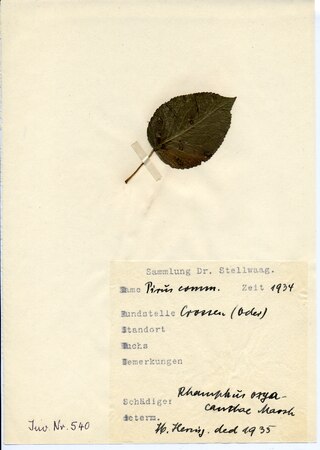
Rhamphus oxyacanthae is a species of weevil native to Europe.
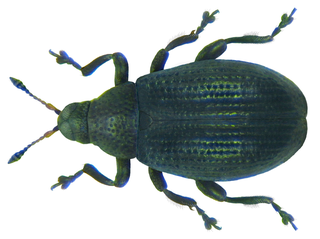
Rhamphus pulicarius is a species of weevil native to Europe.

Thamiocolus viduatus is a species of weevil native to Europe.


















